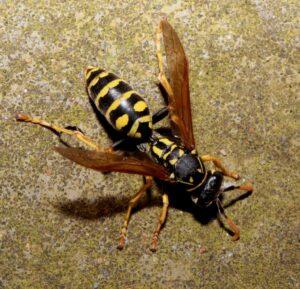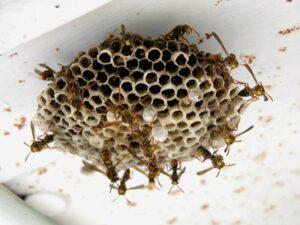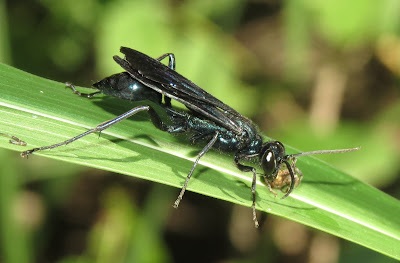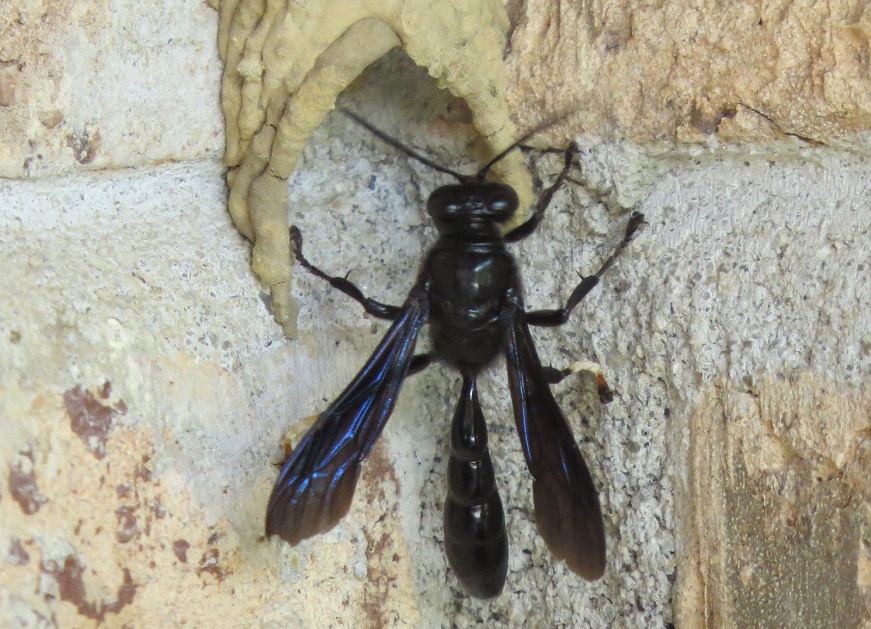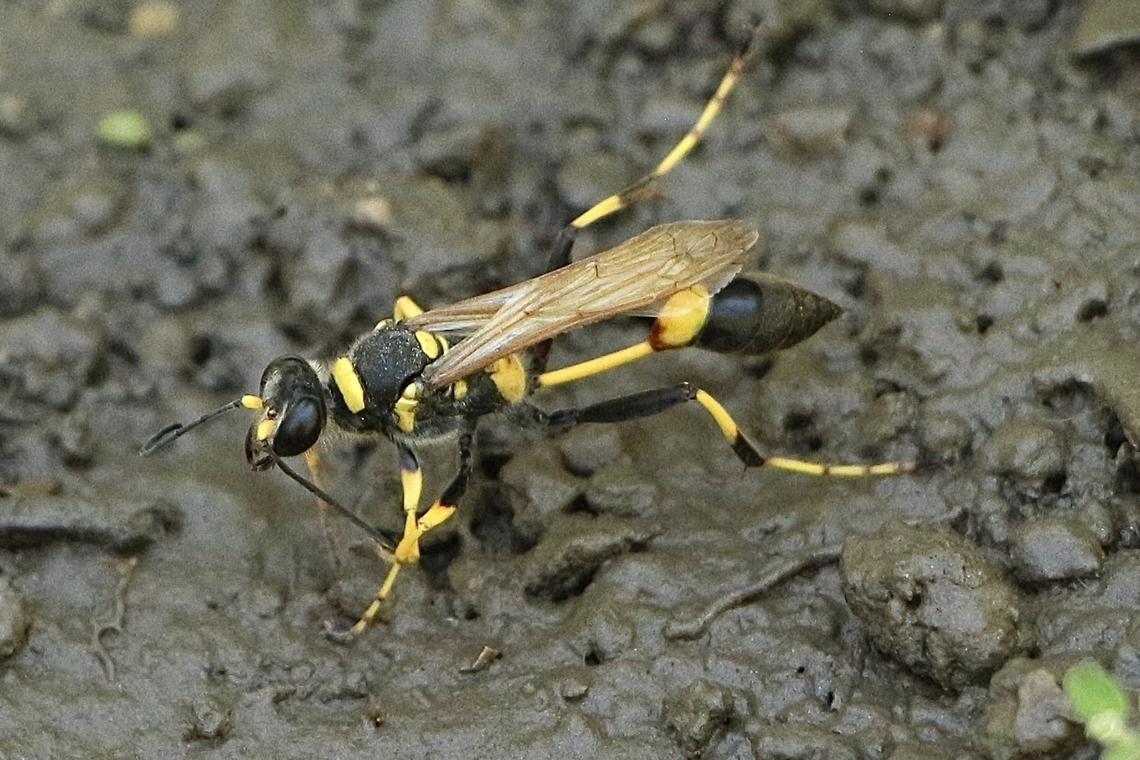European Paper Wasp (Polistes dominula)
Updated on
27/10/2022The European paper wasps are the most widespread members of the Polistes genus. Due to high reproductive rates, they are considered an invasive species in the United States and Canada. However, since they feed on various pest caterpillars, they are often counted among beneficial insects.
Scientific Classification
- Class:Insecta
- Order:Hymenoptera
- Family:Vespidae
- Subfamily:Polistinae
- Tribe:Polistini
- Genus:Polistes
Conservation Status
Description
Adults grow about 2 cm in size, with the wings being 0.95-1.5 cm long in males and 0.85-1.2 cm in females.
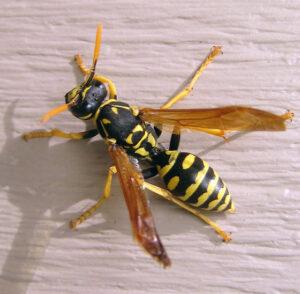
Their slender bodies have a clear distinction between the abdomen and thorax. The base color is black, with vibrant yellow markings, which makes them look similar to several Vespula (yellowjacket) species, especially the German yellowjacket (V. germanica). However, the paper wasps have a relatively compact form, and their long legs can be seen trailing below when they fly – these features help distinguish them from similar insects in their distribution range.
In female European paper wasps, the mandible is primarily black and may be marked with one yellow spot. Their black subantennal marks sometimes have a yellow spot each, while the hind ocelli may have a few yellow spots behind them. There are also a pair of comma-shaped yellow scutal spots.
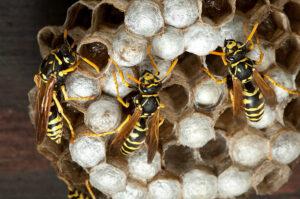
Distribution: Native range includes Southern Europe, North Africa, and temperate regions of Asia, extending to China; has been introduced to Australia, New Zealand, South Africa, as well as both North and South America
Habitat: Temperate terrestrial forests, grasslands, and chaparral regions
Do They Bite/Sting: Yes; they are not as aggressive as some yellowjackets and bumblebees and usually only sting when cornered
Lifespan: About 11 months for nonreproductive males and females; A couple of years for queens
Predators: Dragonfly, beetles, mantes, centipedes, and birds
Behavior and Characteristics
Diet
They mainly feed on caterpillars and larvas, including cabbageworm, hornworm, tent caterpillar, and sawfly larvae. Some populations have been found to eat monarch butterfly caterpillars.
When food is scarce, they have been observed to feed on a wider variety of caterpillars and larva of other insects.
Nesting
The queens or foundresses (reproducing females) change nests multiple times to find one with higher chances of survival. Queen wasps are known to co-operate to protect their nests and offspring – which is why nests with multiple queens have a better chance of survival than nests formed by a single female.
Like all wasps, their nests consist of a single comb constructed out of paper and saliva, attached firmly to a solid surface, like a tree branch or a concrete foundation. The comb is pretty difficult to dislodge by predators like birds, giving these wasps an advantage over other similar insects within their range.
Additionally, their nests have a vivid yellow and black color, usually associated by predators with the warning color of the aggressive German wasps. So they often keep from attacking these nests.
Life Cycle
Colonies are typically started around spring, with multiple queens laying eggs. The queen who lays the most eggs would gain dominance over the other queens within the same colony.
Studies have shown that the European paper wasp broods develop and mature in a much shorter time than many other paper wasp species.
The female offspring may start mating and leave the nest to form separate colonies.
Source
warehouse1.indicia.org.uk, bugguide.net, agric.wa.gov.au, media.istockphoto.com




